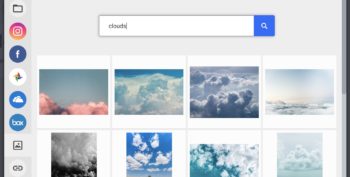Flashissue News & Tips
Growth Hacking: How Flashissue Was Born
Feb 18, 2013
In the second in this series of posts on Growth Hacking, I’d like to walk you through how we got Flashissue off the ground and created an online publishing tool and business with little resource.
For me, Growth Hacking is the ability to get a new idea or concept off the ground quickly by glueing together a number of readily available components.
It’s a creative combination of marketing and development rolled into one; it’s easy enough to do and can apply to any type of business.
To avoid rehashing what we went over before, if you haven’t read the first post in this series, take a quick look at Growth Hacking: The Hot New Way to Get More Customers
Step 1: Define the need (homework #1)
For me, the need for Flashissue was simple. I was finding it so excruciatingly difficult it to get my blog posts into a simple email newsletter, I wanted to fix the problem.
My goal was simple. Create a nice digest style newsletter that would showcase my monthly blog posts neatly in a single newsletter. Each post would be shown as a brief summary paragraph along with an image and a link back to the full article on my blog site.
In addition, I wanted to throw in a few extra articles I found on other web sites that I thought would be interesting (i.e. curated newsletter content).
When it comes to helping you get content into a newsletter most email services leave you hanging.
Most of the services have a feature that lets you use an RSS feed to import blog articles into a newsletter but it’s implemented weakly.
Aesthetically it all works ok but that’s where it ends. I’d end up with a bunch of content I didn’t want; there was no way to reorganize the content I was able to import and I was unable to include my curated articles.
I ended up having to copy paste text and images from all over the place into the newsletter. The result was a formatting nightmare and an HTML spaghetti bomb.
It was taking me almost hour to do something I thought should take just a few minutes.
Step 2: Validate (homework #2)
Next I went out to “validate” my pain: aka “am I the only one having this issue”. I did this on a micro level by talking to as many small business owners I could find.
I found businesses everywhere; Starbucks, the dry cleaners, parties and my address book. I’d canvas all the time.
Pretty quickly, I’d talked to about 30 small business owners (I only counted the ones doing newsletter marketing) and asked them about their biggest issues when creating email newsletters.
The results:
- Issue #1: It takes too long to do.
- Issue #2: I can never get my content formatted correctly.
- Issue #3: I never know what to write about.
#1 and #2 I already knew about but #3 was a new one. It transpires that many businesses do not market well through email because they have no idea what to write about! Interesting.
Step 3: The Big Assumption
I created a big assumption that I could test against. By proving it right or wrong I would know whether there was a viable product to be made.
This was going to be my guide for hacking together a bare bones product to get things off the ground and because it was simply stated it kept me on the rails and made it harder to wander.
My assumption:
“By making it blindly quick and easy to get content into an email newsletter AND by providing additional fresh relevant content to the creator, small businesses would be better able to do newsletter marketing; and win more business. They would be so relieved, they’d pay for the convenience”.
Step 4: Map Out A Solution
The biggest rule at this stage was to keep it simple. I knew that the more barebones and uncluttered my solution, then the closer I’d stay to testing my assumption.
With a mix of manual implementation and quasi automation I glued together a framework for creating a very basic solution.
At this stage, there were certain things I didn’t need to pay attention to. This helped when getting something together quickly and for little upfront cash (my budget was $2,500):
- No need to make things scalable – everything just needed to work for the handful of businesses I chose to work with. I didn’t need it to work with thousands.
- No need to charge any money – I offered the test for free and talked to the businesses about what they would be willing to pay for at a later stage.
- No need to make it look pretty – it wouldn’t look horrible but it didn’t need polish or refinement. Providing valuable functionality would be more important.
If small business owners hated creating newsletters, then here’s what would make their life more productive; this became the basic feature list for my first base product. I would provide them the following:
- A quick way to cherry pick their best blog posts for their newsletter.
- A way to grab / save interesting curated web articles for their newsletter.
- I’d provide relevant fresh content for the newsletter to get around the “I don’t know what to write issue”.
- Make the entire thing 100% automated (the business could be totally hands-off if they wanted).
Now it was a matter a pulling together a set of tools that would allow me to offer the “service” to a small number of businesses.
In the third and final post in this series of posts on growth hacking, I’ll walk you through how this was all pulled together.
If you’d like to subscribe to this series just click here.
Continue reading

